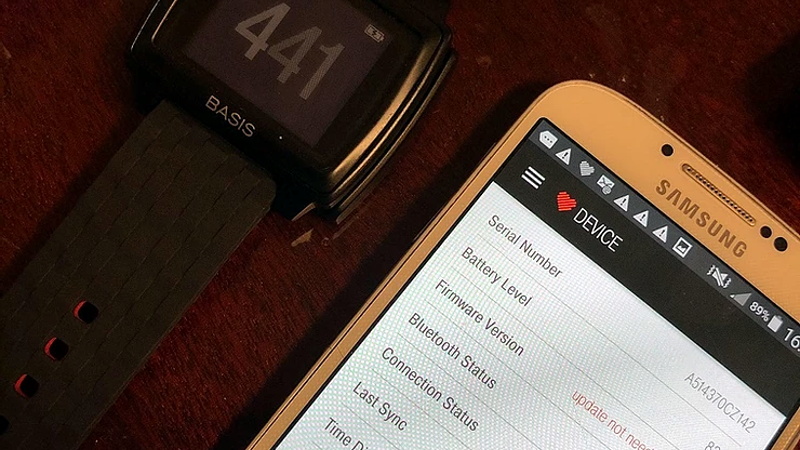When it was released back in 2012, the Basis B1 fitness tracker was in many ways ahead of its time. In fact, the early smartwatch was so impressive that Intel quickly snapped up the company and made it the cornerstone of their wearable division. Unfortunately a flaw in their next watch, the Basis Peak, ended up literally burning some wearers. Intel was forced to recall the whole product line, and a year later dissolved their entire wearable division.
Given their rocky history, it’s probably no surprise that these gadgets can be had quite cheaply on the second hand market. But can you do anything with them? That’s what [Ben Jabituya] recently decided to find out, and the results of his experiments certainly look very promising. So far he hasn’t found a way to activate a brand-new Basis watch, but assuming you can get your hands on one that was actively being used when Intel pulled the plug, his hacks can be used to get it back up and running.

The Basis Android application has long since been removed from the Play Store, but [Ben] said it wasn’t too hard to find an old version floating around on the web. After decompiling the application he discovered the developers included a backdoor that lets you configure advanced options that would normally be hidden.
How do you access it? As a reminder of the era in which the product was developed, you simply need to log into the application using Jersey and Shore as the username and password, respectively.
Between the developer options and API information he gleaned from the decompiled code, [Ben] was able to create a faux Basis authentication server and point the application to it. That let him get past the login screen, after which he was able to sync with the watch and download its stored data. Between examinations with a hex editor and some open source code that was already available online, he was able to write a Python script for parsing the data which he’s been kind enough to share with the world.
We’re very pleased to see an open source solution that not only gets these “bricked” smartwatches back online, but allows the user to keep all of the generated data under their own control. If you’d like to do something similar with a device that doesn’t have a history of releasing the Magic Smoke, the development of an open source firmware for more modern fitness trackers might be of interest.
















Maybe he could work with the GadgetBridge folks to give it proper support.
Will this work with the Basis Peak? I’ve never found a fitness wearable as good as that was.
I can’t tell if this is a serious comment or tongue in cheek since the article called out that model “literally burned some wearers”. What kind of wearable fitness trackers have you been using if one that ‘only’ burns you is the best one you’ve ever used???
Right, because 100% of them are going to catch on fire and burn your hand off at the wrist the moment you put it on :P
It would be a calculated risk but I don’t sleep with a wearable and I prefer using magnetic bands that can be removed quickly. Why would I take such a risk? Because it’s taken 4 years for Fitbit to catch up to where Basis was in 2016. But Fitbits have one glaring issue. They like to lock features behind a subscription.It’s not clear to me if I could live without those features and I’m not going to reward Fitbit with a sale just to find out.
Yes, modern wearables can have cool ECG and VO2 capabilities but why is it they can’t get the skin temp and perspiration sensors in their devices? Why could Basis reliably detect when I would jog, walk, or bike reliably but other wearables I tried cannot? I’d ask why making data available is so hard but companies like Google and Facebook make the answer to that pretty obvious. Poor user interfaces are primarily an issue with smaller companies but Garmin isn’t that small and has failed pretty hard here IMO.
I haven’t tried any Samsung devices as it looks like they lock their wearables into their ecosystem pretty strongly.
The market has consolidated and we see the effects of that where innovation stagnates, and its hard for new competitors to enter the market.
I also hate how big companies (like Intel in this case) try to get into markets outside their core business by buying a company successfully competing in that space, realizing that it doesn’t work with their core culture, then killing (or at least damaging) that smaller company.
I don’t know if Basis wold have survived the issues with the Peak on their own but I suspect they would have put up more of a fight to survive.
Someone recently revived the Microsoft band as well.
Im from india and a found a basis b1 band..but now i dont have any app stored on my anroid.. Can i start this watch again.. Its only showing tym and heart beat etc but not syncing